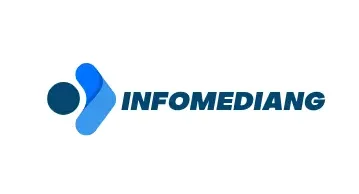In today’s competitive market— as a business owner, you might have seen that having business debts triggers significant challenges that can disrupt your business’s cash flow, steady growth and complicate your daily operations. If you manage your business debts unnaturally it can drain valuable resources and impact your company’s ability to innovate/respond to market changes. Increased business debts can force your businesses to divert funds from essential investments in technology, personnel, and expansion initiatives. In simpler words— you are compromising your business’s long-term success.
You must proactively manage your business debts to mitigate these risks and secure a stable financial future. By responding to this issue early you should take strategic steps to assess and address debt problems. This way your business can maintain healthy cash flow, optimize operational efficiency and lay the groundwork for sustainable growth. For this you should keep a close eye on current liabilities but also plan for future financial needs. This will help you to ensure that every decision you are making is supporting overall stability and progress.
In this article I am going to discuss specific strategies that can help businesses tackle debts effectively. These practical solutions may become a roadmap for you to manage business debts in a way that promotes resilience and long-term prosperity.
Strategies to pay off your business debts effectively as a business owner
1. Assess Your Current Debt Situation
Step 1: List All Debts
You should create a list of all outstanding business debts. For example—your business might have a long-term bank loan for equipment, a revolving line of credit for operational purposes, vendor invoices/bills with due dates, and outstanding business taxes. List each of these business debts with details such as the principal amount, interest rate, repayment terms, and due dates.
For example – a $100,000 bank loan has a 5% annual interest rate over 10 years, a $30,000 line of credit has an 8% rate, and vendor invoices/bills are due within 30 days.
Organize these debts by category—such as loans, credit lines, vendor payments, and taxes. This will give you a clear picture of your overall business liabilities and develop a strong base for effective finance management.
Step 2: Prioritize Debts
Once you have listed all debts—prioritize them based on their financial impact on the business. This involves identifying which debts have the highest interest rates and separating secured/unsecured debts.
For example – if your business holds a credit card debt at 15% interest alongside a bank loan at 5%, you should prioritize the high-interest credit card debt. This way, you can reduce the cost of interest payments in the long term.
You’ll notice that your secured debts, such as mortgages on business properties, have more lenient terms compared to unsecured debts. On the other hand, you can’t leave behind vendor bills unpaid, as it will hamper your business relations with the suppliers. By listing your business debts as per to these criteria, you can focus on eliminating the most expensive liabilities first while strategically managing others.
Step 3: Analyze Cash Flow
Once you get a clear understanding of your business debt types and the amount, it’s necessary for you as a business owner to analyze your cash flow and determine how much you can practically allot towards business debt repayment.
You should start by calculating your monthly revenue and your costs. For example—if your business generates $100,000 in revenue per month and has fixed costs of $60,000, you have a surplus of $40,000. So, you can use that surplus money for debt repayment.
But if existing debt repayments eat up $30,000 from your surplus, you have only $10,000 left for investing in business development and other costs. So you can see, analyzing your business cash flow will highlight how much breathing room you have each month. It also helps you identify areas where you may trim costs and free up more funds.
2. Create a Strategic Repayment Plan
Strategy 1: Debt Snowball Method
You can use the debt snowball method and pay off your business debts.
For example – If your business has $2,000 as a credit card balance— $5,000 in vendor invoices and $50,000 on a business loan—you can start investing your extra funds toward eliminating the $2,000 credit card balance. Once you have paid off the entire balance—you can shift to the next one with the smallest balance—that is $5,000 vendor bills and start putting extra funds there.
This way you can pay off your business debts faster—reduce your overall debt load, and boost your confidence. It also frees up cash flow that can be redirected to tackle larger debts.
Strategy 2: Debt Avalanche Method
You can also use the debt avalanche method and start paying off your debts with the highest interest rates.
For example – Let’s say you have a credit card debt at 18%—a business loan at 7% and vendor payments with no interest. Here, you should start investing your extra funds toward the 18% credit card debt first. This way you can reduce the overall interest payment. Once that high-cost debt is paid off you should shift to the next debt with the highest interest rate; that is your business loan with a 7% rate of interest.
This strategy is highly beneficial for your business if you are focusing to lower your overall interest payment. Of course, this method may take a bit longer to make you debt free. One more thing—for both debt snowball and debt avalanche methods—you need to pay the minimum payment to each of your debt accounts every month.
Strategy 3: Negotiate with Creditors
You may negotiate with your creditors to get more favorable terms for repaying debts.
For example – Imagine your business is struggling with high-interest credit card debt or strict repayment schedules on a business loan. By reaching out to your credit card company and the bank—you may clearly portray your financial condition. By negotiating a lower interest rate—such as reducing your credit card interest rate from 18% to 12%—or requesting your bank for an extension to your repayment terms you can lower your financial pressure.
This way you can also maintain positive relationships with your creditors. With transparent communication and a clearly outlined repayment plan—you can build your credibility and get some financial relief that may sync with your business requirements.
Strategy 4: Consolidate or Refinance Debt
One of the most effective ways to get out of debt is Debt consolidation or refinancing your debts. Consolidating your debts is a simple process. You can combine your multiple debts and pay them off totally with a single low-interest loan.
For example – Your business might have several debts—a high-interest credit card at 15%, a medium-term bank loan at 7%, and several vendor invoices. By taking out a low-interest loan, suppose at a 6% interest per annum, you can pay off all of them at once. This way you can avoid multiple payments in a month, remove the hassle of remembering due dates, and reduce your overall monthly payment.
Refinancing can also offer similar advantages. It also offers extended repayment terms that may ease up your cash flow quite a bit. But it is important that you should compare offers from various financial institutions, as each of them may offer you different refinancing options in terms of rates and fees. You should choose the offer that gives you the most favorable conditions for your business.
3. Increase Cash Flow to Accelerate Repayment
Tactic 1: Cut Unnecessary Expenses
You should start by auditing your operational costs in detail. This way you can identify any non-essential expenditures.
For example – Your business might have subscribed to multiple software platforms with overlapping functionalities. While analyzing operational costs you have found that many of those subscriptions are no longer needed. So, it will be your responsibility to cut them off and save costs. By evaluating each cost line, you can decide which subscriptions are needed now and which ones should be canceled or replaced with more cost-effective alternatives.
You may also save on operational costs by transitioning to smart business practices. You may adapt to remote work policies or streamline procurement processes. This way you can reduce expenses without compromising the quality or efficiency of your employees.
Tactic 2: Boost Revenue
Increasing your business revenue is equally important as cutting off unnecessary expenses. It can provide you with additional funds to pay off your debts and help your business grow.
For example – You may upsell to existing customers by introducing a few complementary products or services that add value to their current purchase. If your business delivers business software to your clients— then you may also offer them premium support packages—advanced training sessions—or free upgrades to higher versions.
You may also diversify your offers by running targeted promotions to attract new customers. Your product pricing is a vital element to lure customers. So, you must optimize your pricing and offer low pricing during the off-season and vice versa. By using dynamic pricing you can maximize revenue and also sustain in the competitive market.
Tactic 3: Liquidate Underutilized Assets
You should also look into your balance sheet periodically. Identify any assets that are not being used for your business operations.
For example – List all the outdated equipment, excess inventory, or underused properties. You may sell off these illiquid assets and generate liquid cash for business operations. On the other hand, you can free up warehouse spaces by selling off surplus inventory and reduce storage costs.
Tactic 4: Seek External Funding (Cautiously)
You can opt for external funding as a business owner and increase your cash flow in the business. But it’s important to be cautious while implementing this strategy.
For example – You may opt for short-term loans and increase cash flow during a slow season. But, you must compare offers by banks and analyze loan terms to avoid excessive interest costs in the long term. You may also get investor capital if you have plans to expand your business or go for major operational upgrades. Whichever option you choose, you should make transparent communication with lenders or investors about your business strategies.
Make sure your long-term financial goals should align with your assets and cash flow.
4. Leverage Professional Support
Option 1: Work with a Financial Advisor
If you have difficulties in making decisions for your business, make sure you consult a financial advisor who can guide you in setting up a debt repayment strategy as per your financial situation.
For example – Suppose your business has several high-interest loans and credit lines that you are facing problems with. In that case, you should discuss your situation with a financial advisor who can analyze your business’s cash flow, assess the impact of high-interest rates, and set up a debt repayment plan for you.
An expert financial advisor might recommend you consolidate your business debts or negotiate with lenders to adjust repayment schedules. This will align your finances with seasonal revenue fluctuations because debt repayment can eat up a major portion of your business revenue.
Option 2: Consult a Debt Relief Company
If your business is facing overwhelming debt burdens—you may consult a debt relief company and sign up for debt management plans (DMPs) or debt settlement programs.
For example – Suppose your business is facing high monthly payments on multiple credit accounts. If you haven’t consulted a financial advisor—you might be facing issues with managing multiple debt payments and variable interest costs. A debt relief company may negotiate with creditors on your behalf and reduce interest rates—set up a repayment plan—or extend payment terms—or settle your debts less than what you owe to the creditors.
Through a debt management program or a debt settlement method, you may streamline your debts into a single, manageable payment plan. This will ease up your cash flow pressure. But I would suggest you should always consult a financial expert before signing into any of these programs. They will suggest you the best option according to your business’s financial situation.
Option 3: Legal Guidance
As a business owner you should always prepare for a rainy day! Your business might be running smoothly now, but you don’t know when will a storm hit! If you face any financial crisis, and find yourself on the brink of bankruptcy—seek legal guidance asap to protect your business’s future.
For example – If you face the risk of insolvency—a bankruptcy attorney can guide you towards alternatives such as Chapter 11 reorganization. This legal option allows your business to restructure its debts while continuing operations.
This way, you’ll get a breathing space to negotiate with creditors and reorganize your business’s financial commitments. Legal experts such as a bankruptcy attorney can help you navigate complex bankruptcy law requirements and keep your business safe throughout the process.
5. Prevent Future Debt Accumulation
Build an Emergency Fund for Unexpected Expenses
- You should create an emergency fund so that you can meet sudden business expenses and stop incurring future debts.
- You may set aside funds equal to three to six months of operating expenses.
- Use the fund to cover unexpected costs and even invest in business growth.
- Make sure you save enough in the emergency fund so that you don’t need to rely on creditors or lenders to maintain your business’s cash flow.
Adopt Strict Budgeting and Financial Forecasting
- You should set up a strict budgeting system for your business and implement financial forecasting to reduce the risk of incurring new business debts.
- Create a monthly and quarterly budget plan for your business. Make sure you align each expense with expected revenue.
- Regularly forecast your business’s cash flow and adjust budgets to consider market trends and operational changes.
- You must proactively minimize overspending so that you can reduce incurring unnecessary business debts that impact your business growth.
Regularly Review Financial Statements and Adjust Strategies
- Regularly review your income statements, balance sheets, and cash flow reports to monitor your business’s financial health.
- You should identify signs of rising overhead costs and focus on areas where you can implement cost-cutting strategies.
- Adjust your business financial strategies considering the insights from reviews and reports.
- Make sure your expenses are aligned with revenue, and address financial issues before they require additional business credit.
Avoid Over-Leveraging for Growth
- You should understand as a business owner that taking out business debt can boost your growth—but too much business debt can impact your long-term financial health.
- Investing aggressively for business expansion may generate debts. The situation may get worse if your business revenue and cash get interrupted.
- Balance business debt with reinvested revenue and maintain a low debt-to-equity ratio to ensure sustainable growth.
Tools & Resources For Business Owners
1. Free Templates: Debt Tracker & Cash Flow Worksheet
List all liabilities
- Equipment loans (e.g., a $20,000 loan at 6% interest over 5 years)
- Vendor payments (e.g., multiple invoices due monthly)
- Credit lines (e.g., a $30,000 line of credit with variable interest)
Record key details
- Principal amounts, interest rates, due dates, and payment terms
b. Cash Flow Worksheet Template
Track monthly income and expenses
- Record revenues (e.g., sales, services) and fixed/variable costs (e.g., rent, utilities, payroll)
- Calculate available surplus/funds for business debt repayment
2. Recommended Apps
- Accounting software, tracks invoices, expenses, and cash flow in real-time
- Generate financial reports, highlight trends and areas for improvement
- Specialized app, creates and monitors a debt repayment plan
- Tracks progress with graphs and milestone alerts
3. Further Reading: Books on Business Finance
- Financial Intelligence for Entrepreneurs – Karen Berman & Joe Knight
- High Growth Handbook – by Elad Gil
- The Lean Startup – by Eric Ries
- Multipliers – by Liz Wiseman
- Build – by Tony Fadell
- The First 90 Days – by Michael D. Watkins
- The Beauty of Discomfort – by Amanda Lang
Author:

Lyle Solomon has extensive legal experience, in-depth knowledge, and experience in consumer finance and writing. He has been a member of the California State Bar since 2003. He graduated from the University of the Pacific’s McGeorge School of Law in Sacramento, California, in 1998 and currently works for the Oak View Law Group in California as a principal attorney.


